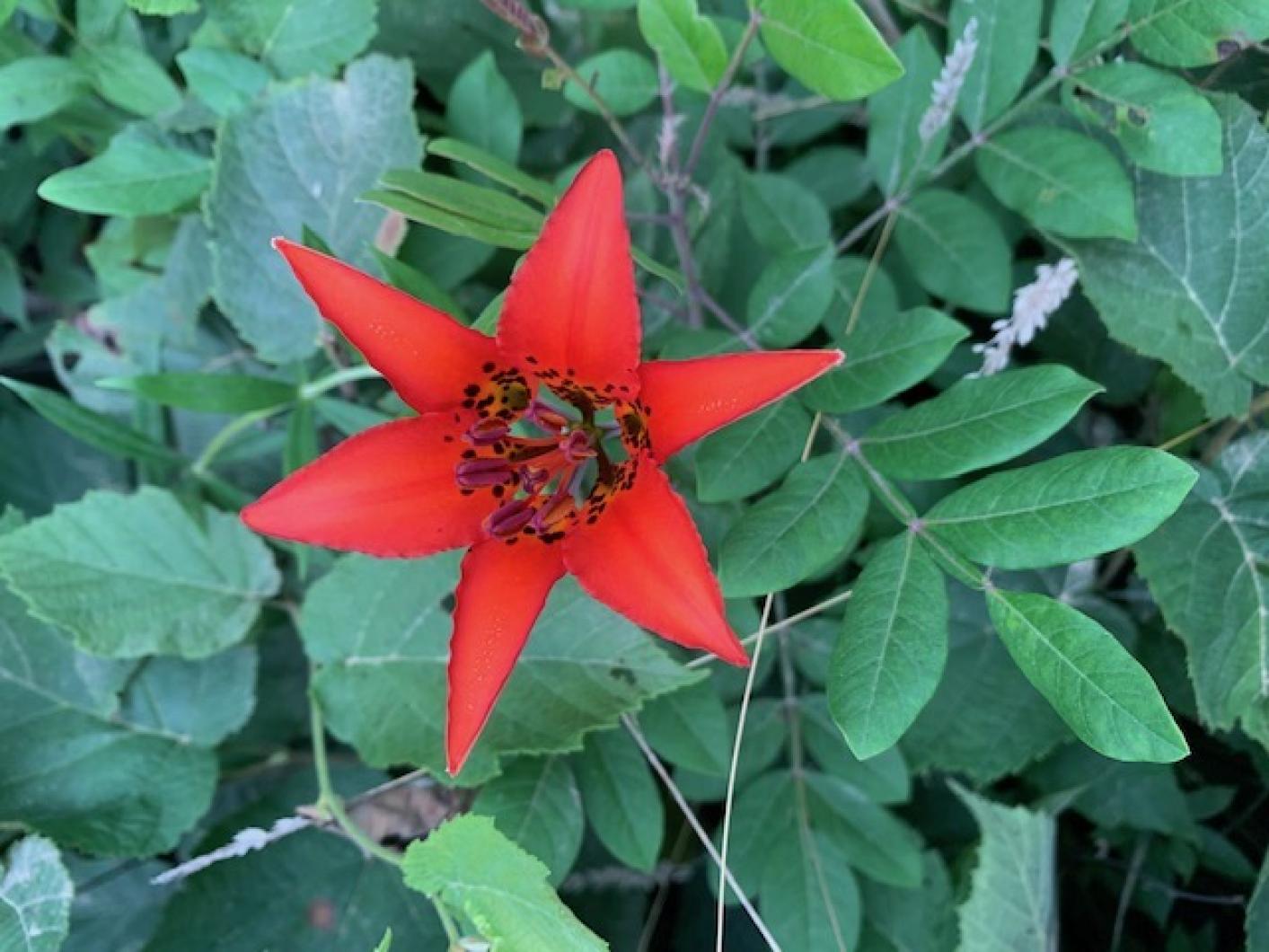Tom Hodgson of West Tisbury wants to make a sign.
This isn’t surprising since Tom is a sign-maker. However, I was a bit skeptical of the necessity of the one he proposed. “Do you really think we need it?” I asked, not able to imagine the dolt that must be reminded of such a simple and seemingly obvious message.
“There is only one of them, folks know not to take the last one, right?” Tom scoffed at my optimism. He explained, “It has already happened once and I don’t want it to happen again.”
Really? I asked, incredulously. Yes, he shared: a few years back, someone picked the single wood lily.
“DO NOT PICK” (his capitals, not mine) is the sign that will have to go up to remind folks not to take the solitary and stunning wood lily that stands roadside of a popular beach.
Unfortunately, the sign may not work. Humans may respect the edict but other creatures may not follow its instructions. Wood lilies’ greatest foe might not be the people that gather them to be part of a homemade bouquet but rather the roaming deer that consider the bold blossoms a luscious lunch. The hunger of deer might be the biggest threat to this gorgeous and declining species.
Wood lilies, Lilium philadelphicum, are an unforgettably beautiful and useful wildflower whose population is waning. Once plentiful – described as the most widely distributed lily in North America – it is now a special treat to see this flower due to habitat decline, collection by people and consumption by deer. This isn’t good news for the hummingbirds, bees and butterflies, such as monarchs and swallowtails, that also find them enticing for their nectar.
When wood lilies were plentiful, they were also a source of nutrition, medicine and magic. Native Americans used them as foodstuff, eating the below-ground bulb roasted, boiled, baked, as an additive to thicken soups and stews, or for dusting the pollen atop a dish as a nutritional garnish. The only creature that shouldn’t partake is the domestic cat, for whom the consumption of any part of this plant could cause acute kidney failure and death.
Healers made a wood lily poultice and applied it to sores, bruises, swellings and wounds. Midwives employed the plant to facilitate the delivery of the placenta after birth. Even the effects of dog bites could be minimized by its use, with providers suggesting that the wood lily “caused dogs’ fangs to drop out” after a bite. Spider bites were also treated with a powder made from the flowers.
Shamans and others engaged wood lilies in a mystical way – as a love potion and marital aid – although one that might break up a couple instead of bringing them together. Wood lilies would be picked and dried and, if the plants twisted together, it was evidence of a woman’s infidelity. For the unfaithful husband, a concoction was made and used as a wash after spending time with a woman other than his wife. If a wood lily was in play, the woman was apt to lose a spouse one way or another.
Blooming in later July and August, wood lilies are a show-stopping flower that can bloom red, orange or even yellow. The latter, though, is rare, having been reported very sporadically on Nantucket only twice in the last century.
So, if you see Tom’s sign, be sure to follow its instructions: look but don’t collect the stunning stem. Now if we could teach the deer to read, the wood lily might have a fighting chance.
Suzan Bellincampi is director of the Felix Neck Wildlife Sanctuary in Edgartown, and author of Martha’s Vineyard: A Field Guide to Island Nature and The Nature of Martha’s Vineyard.







Comments
Comment policy »